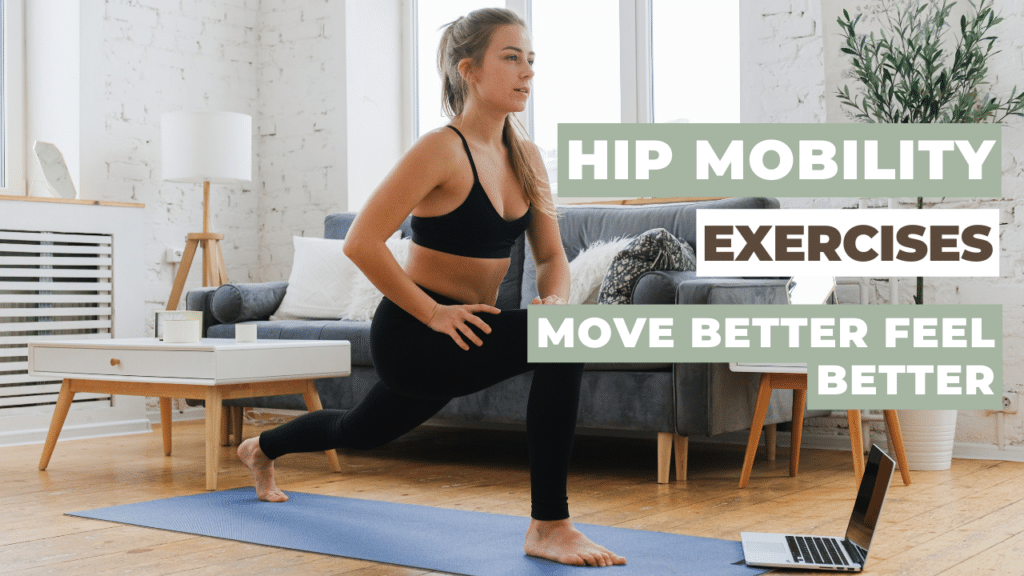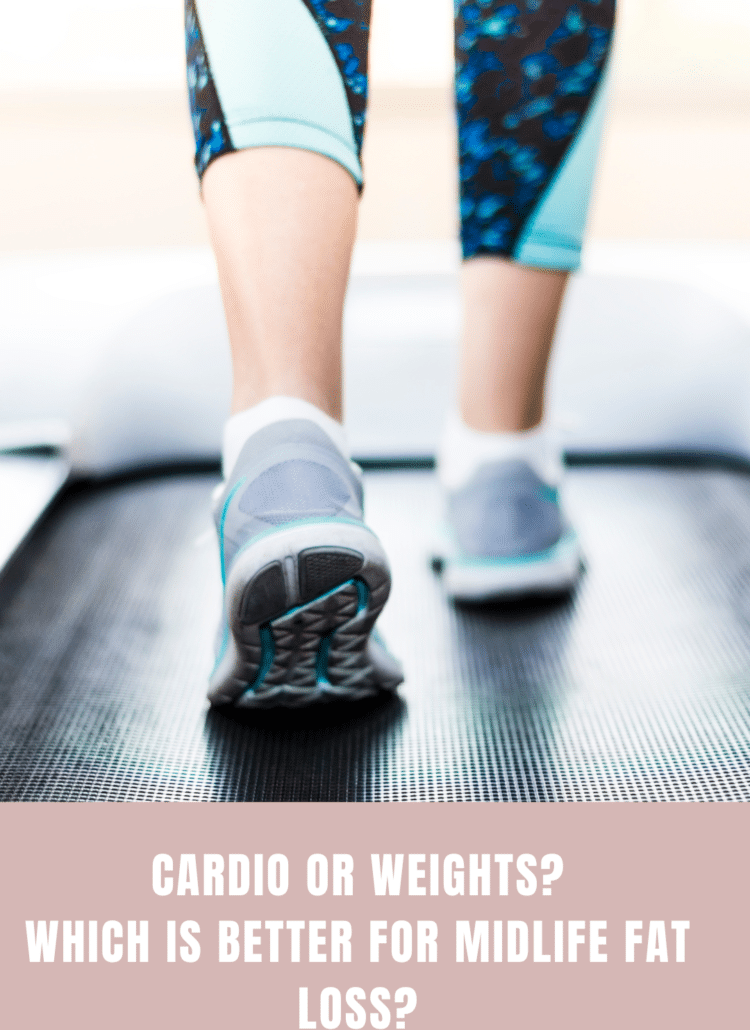
Do you suffer from lower back pain, tightness and stiff hips? You are certainly not alone. This article is going to help you counteract that and share the best hip mobility exercises to help you move and feel better.
As we spend more time sitting at our desk jobs and less time moving, the number of people struggling with poor hip mobility is growing and not just in old people. People of all ages are feeling the effects of sitting too much and moving much less.
If there is one thing that will make you feel old in life, it’s the inability to move well. If you can move well you are young, if you can’t, it will certainly show your age.
For those of you have have young children, just pay attention next time they are playing on the floor. Look at how they are able to get down low to the floor in a perfect squat position like in the image below. We were all born with the ability to do this low squat movement, but as our movement patterns change or indeed reduce as we age, we somehow lose the ability to get into this low squat position.
There are certain cultures across the world who still utilise this low squat position in their daily lives, and as a result, have lower incidences of lower back pain.
I truly believe that working on improving mobility in your body, particularly around your hips, really is the fountain of youth.
When I fail include mobility work to run alongside my training, boy do I feel it!!
It’s not just for athletes seeking to enhance performance but it’s for everyday humans simply wanting to move with more ease and feel better in their bodies.
Flexible and mobile hips are crucial for overall health and fitness. They not only assist in preventing injuries but also allow you to perform movements more efficiently, whether it’s running, squatting, or even just bending down to pick something up.
In this article, we will explore a range of hip mobility exercises that target various muscles and improve your range of motion.
Unlock the potential of your hips and experience improved flexibility, reduced pain, and enhanced performance through these effective hip mobility exercises.
Get ready to move better, feel better, and live better with these simple yet effective techniques!
Importance Of Hip Mobility & Flexibility
Having good hip mobility and flexibility, having a full range of motion at the hip joint plays a vital role in maintaining a healthy body. The hips are one of the largest joints in the body, connecting the lower body to the upper body. They allow for a wide range of movements, including walking, running, jumping, and bending. When your hips are tight and lack mobility, it can lead to discomfort, pain, injuries and even prevent muscles from firing correctly.
The body is a complete kinetic chain, which means that tightness in one area can often travel and cause pain and niggles in other areas of the body too and isn’t just isolated to specific muscle groups. Full-body joint mobility is important for injury prevention and longevity.
The hips are the biggest and central load of the body and so it’s essential to keep them strong but also moving well effectively and free from hip pain.
Benefits Of Hip Mobility Exercises
Incorporating hip mobility exercises into your routine offers many benefits. Firstly, these exercises help to increase the range of motion in your hips, allowing you to move more freely and with greater ease, and that always feels good. This increased mobility can also improve your performance in various physical activities as well as in day-to-day life.
I’m not just talking about athletes here, just being able to perform a better squat, lunge or any leg exercise is going to help you get better results from your workout. You will be able to get up and down from the floor with more ease. Your body will just become more effective.
Can you get up and down from the floor without using your hands? Well, good hip mobility would allow you to do that. It’s an important consideration as a study found that your ability to get up and down from the floor is also a greater predictor of longevity Being able to move well, could also help you live longer.
Next, hip mobility exercises can help to reduce pain and discomfort caused by tight hips. We have gotten so used to living with pains and niggles, many of us have forgotten what it’s like to feel pain-free. By stretching and strengthening the muscles surrounding the hip joint, you can alleviate tension and prevent the onset of common hip-related conditions, such as hip impingement or bursitis.
Lastly, hip mobility exercises contribute to better overall posture and alignment. When your hips are mobile and flexible, it can improve your posture and reduce strain on your lower back and knees. This can have a significant impact on your day-to-day living, as proper posture promotes better movement efficiency and decreases the risk of injuries. You will stand taller with more confidence as you continue to move and feel better.
Common Causes Of Hip Tightness & Stiffness
Good hip mobility and flexibility are essential for maintaining a healthy body. The hips are a complex joint that plays a vital role in supporting your body’s movement. However, due to a sedentary lifestyle, poor posture, or lack of regular exercise, or overly repetitive movement patterns, many people experience tightness and stiffness in their hips.
When your hips lack mobility, it can lead to compensatory movements in other parts of your body, putting strain on your lower back, knees, and ankles. Over time, this can lead to chronic pain, reduced performance, and an increased risk of injuries.
By focusing on hip mobility exercises, you can restore the natural range of motion in your hips, improve your posture, and alleviate pain and discomfort. These exercises target the muscles surrounding the hip joint, including the hip flexors, glutes, hamstrings, and adductors, helping to release tension and increase flexibility.
There are several factors that contribute to hip tightness and stiffness. Understanding these causes can help you identify and address the underlying issues that may be limiting your hip mobility.
1. Sedentary Lifestyle: Sitting for prolonged periods, such as working at a desk or watching TV, can lead to tight hips. When you sit for extended periods, your hip flexors are in a shortened position, which can cause them to become tight and weak.
2. Lack of Mobility Work: Neglecting to stretch and warm-up before physical activity can result in tight muscles, including those in the hips. Without proper stretching, and taking your joints to the end of their ranges means the muscles around the hip joint can become stiff and restrict your range of motion.
3. Muscle Imbalances: Imbalances in muscle strength and flexibility can affect your hip mobility. For example, weak glutes and tight hip flexors can result in limited movement and poor hip stability.
4. Injuries and Inflammation: Previous injuries to the hip or surrounding areas can lead to scar tissue and inflammation, which can limit mobility and cause discomfort.
Precautions and Considerations Before Starting Hip Mobility Exercises
Incorporating hip mobility exercises into your fitness routine can really offer you so many benefits for both your physical and overall well-being. Plus taking the time to slow down, connect and check in with your body can help you deepen the connection that you have with it. Please keep in mind that mobility is different from flexibility it’s about being able to move well in a bigger range of movement, so that requires a combination of both strength and flexibility. Working on mobility will help you with:
- Improved Range of Motion: Regular hip mobility exercises help to increase the flexibility and range of motion in your hips. This enhanced mobility allows you to perform movements more efficiently and with greater ease.
- Reduced Pain and Discomfort: Tight hips can lead to chronic pain and discomfort, especially in the lower back, knees, and ankles. By improving hip mobility, you can alleviate these symptoms and reduce the risk of future injuries.
- Enhanced Athletic Performance: Athletes, in particular, can benefit from hip mobility exercises as they improve functional movement patterns and muscle activation. With increased hip mobility, athletes can perform with greater power, speed, and agility.
- Better Posture and Alignment: Tight hips can contribute to poor posture and spinal misalignment. By incorporating hip mobility exercises, you can improve your posture, align your spine, and alleviate strain on other parts of your body.
- Improved Blood Circulation: Hip mobility exercises stimulate blood flow to the hip joints and surrounding muscles, promoting faster recovery and reducing inflammation.
- Better Balance and Stability: Strong and mobile hips are essential for maintaining balance and stability, especially as you age. By improving hip mobility, you can enhance your stability and reduce the risk of falls and injuries.
By incorporating hip mobility exercises into your routine, you can unlock the potential of your hips and experience these incredible benefits. Whether you are a beginner, intermediate, or advanced fitness enthusiast, there are exercises suitable for every level.
Considerations Before Getting Started
Before diving into hip mobility exercises, it’s crucial to consider a few precautions to ensure your safety and prevent any potential injuries.
- Consult with a Healthcare Professional: If you have any existing medical conditions or injuries, it’s essential to consult with a healthcare professional before starting any new exercise program. They can provide personalized advice and modifications based on your specific needs.
- Warm-Up Properly: Before engaging in hip mobility exercises, it’s crucial to warm up your body with some light cardio exercises, such as jogging or cycling, for 5-10 minutes. Warming up increases blood flow to your muscles, making them more pliable and less prone to injury.
- Start Slowly and Progress Gradually: If you are new to hip mobility exercises, start with basic exercises and gradually increase the intensity and duration as your body adapts. Pushing yourself too hard too soon can lead to muscle soreness or injury.
- Listen to Your Body: Pay attention to any discomfort or pain during the exercises. If you experience sharp or severe pain, stop immediately and consult with a healthcare professional.
- Maintain Proper Form: Proper form is crucial for maximizing the effectiveness of hip mobility exercises and reducing the risk of injury. Focus on maintaining a neutral spine, engaging the correct muscles, and avoiding excessive strain or tension.
Take your time and be patient. You have years of sitting to work on releasing and this process should not be rushed.
Here I share some of my favourite and I feel are some of the best hip mobility exercises with options for different levels. As well as a description
Basic Hip Mobility Exercises For Beginners
If you’re new to hip mobility exercises, starting with basic movements is a great way to ease into the routine. These exercises focus on increasing flexibility and range of motion without putting excessive strain on your hips. Here are a few examples to get you started:
If you’re new to hip mobility exercises, starting with these basic exercises will help improve your flexibility and prepare your body for more advanced movements.
- Hip Circles: Stand with your feet hip-width apart and place your hands on your hips. Slowly rotate your hips clockwise in a circular motion for 10-15 repetitions, then switch to a counterclockwise direction. This exercise helps to loosen up the hip joint and improve mobility.
- Good Morning: Keeping feet at hip-width apart, maintaining a long straight spine. Place your hands on your hips and add a hip flexion hips sending the hips backwards, keeping the back flat into a forward fold position but keeping the head up. Go to where you feel a stretch in the hamstrings, hold the position then engage the glutes and hamstrings to come back up to a standing position.
- Supported Deep Squat: Standing close to a post or have something in front of you like a couch. Maintaining an upright position with your upper body, lower yourself down into a squat position going as low as your knee, hip and ankle mobility will allow you to do comfortably. Hold at the bottom position and gently sway from side to side. Return to standing by pushing through the base of the feet and then repeat.
- Hip CARS: In an all fours position on hands and knee’s. Take your right knee off the floor and out to the side. Make a large circle with your knee moving through the full movement availability of your hip. Return to the starting position and repeat for a 5 repetitions in total before going in the other direction and then repeat the sequence on the left leg.
- 90/90 – Sit on the floor and place the legs in a 90/90 position. Start with the right leg straight out in front of you with a 90 degree angle at the knee and keep your right foot flexed. The left leg should be behind in a mirrored position again with the hips and knees at a 90-degree angle also with the left foot flexed.
- Knee Drop’s & Hip Swivels – Sit on your bottom with your legs bent and out in front on a 45-degree angle. Keeping the hips planted on the floor, drop the knee internally rotate the hip join and get as close to the floor as you can without lifting the hips off the floor. For the hip swivels, repeat the same motion but this time allowing the hips to lift.
Intermediate Hip Mobility Exercises For Increased Flexibility
Once you have mastered the basic hip mobility exercises, you can progress to more challenging movements to further enhance your flexibility and range of motion.
1. Lateral Leg Swings:
2. Un Assisted Deep Squats
3. World’s Greatest Stretch
2. Frog Stretch
3. Straddle Leg Lifts To Forward Fold
Advanced Hip Mobility Exercises for Fitness Enthusiasts
For athletes and fitness enthusiasts looking to take their hip mobility to the next level, these advanced exercises will challenge your muscles and improve your performance.
1. Cossack Squats:
2. Bench Assisted Hip Flexor Stretch
3. Bench Assisted Pigeon
Incorporating Hip Mobility Exercises into Your Workout Routine
To reap the full benefits of hip mobility exercises, it’s important to incorporate them into your regular workout routine. Because I know you are already short on time, I like to incorporate these exercises as part of your warm-up to prepare your body for more intense physical activity.
Alternatively, you can dedicate specific days or sessions solely to hip mobility exercises. Aim for at least two to three sessions per week to see noticeable improvements in your hip flexibility and range of motion.
Tips for Maintaining Hip Mobility and Preventing Injuries
While hip mobility exercises are beneficial, it’s important to complement them with other healthy habits to maintain hip mobility and prevent injuries. Here are a few tips to keep in mind:
- Stay Active: Engaging in regular physical activity and avoiding prolonged periods of sitting can help maintain hip mobility. Incorporate activities that involve hip movement, such as walking, cycling, or dancing, into your daily routine.
- Stretch Regularly: In addition to hip mobility exercises, incorporating stretching into your routine can help maintain flexibility. Focus on stretching not only the hips but also the surrounding muscles, such as the hamstrings, quadriceps, and glutes. This is where yoga can become a great supportive practice.
- Strengthen the Core: A strong core provides stability and support to the hips. Include exercises that target the abdominal and lower back muscles, such as planks, side planks, and back extensions, in your workout routine.
- Listen to Your Body: Pay attention to any signs of discomfort or pain during exercises. If something doesn’t feel right, modify the exercise or consult a professional for guidance. Pushing through pain can lead to further injuries.
Conclusion: Embracing Hip Mobility Exercises for a Healthier and More Flexible Body
I certainly wouldn’t consider myself a mobility expert but through my years of training, and qualifications in callisthenics and MovNat I have grown to see and feel the importance of effective mobility training. Incorporating hip mobility exercises into your routine can take a little extra time but will be an invaluable investment in your overall health and well-being. By enhancing your flexibility and joint health, you can improve your performance in physical activities, reduce the risk of injuries, and experience a greater range of motion in your daily life. Your body will thank you for it, trust me!
Remember to start with basic exercises if you’re new to hip mobility work and gradually progress to more advanced movements as your body becomes more accustomed. Listen to your body, take your time and view it as part of your self-care practice, and always consult professionals when needed. With consistency and dedication, you can unlock the potential of your hips and enjoy the benefits of improved flexibility, reduced pain, and enhanced performance.
Start moving better, feeling better, and living better today with these simple yet effective hip mobility exercises!
Embracing hip mobility exercises for a healthier and more flexible body
To maintain optimal hip mobility and prevent injuries in the long term, consider implementing these tips into your daily life:
1. Take Frequent Breaks from Sitting: If you have a sedentary job, make it a habit to take short breaks every 30 minutes to stand up, stretch, and move around. This will prevent your hip flexors from becoming tight and weak.
2. Stretch Regularly: Dedicate a few minutes each day to stretching the muscles around your hips, including the hip flexors, glutes, hamstrings, and adductors. Consistency is key in maintaining flexibility.
3. Strengthen the Glutes: Strong glutes play a crucial role in hip stability and mobility. Incorporate exercises such as squats, lunges, and hip thrusts into your routine to strengthen and activate your gluteal muscles.
4. Practice Good Posture: Maintaining good posture throughout the day helps to align your spine and reduce strain on your hips. Be mindful of your posture while sitting, standing, and walking.
5. Listen to Your Body: Pay attention to any signs of discomfort or pain in your hips. If you experience persistent pain or a decrease in mobility, consult with a healthcare professional for proper diagnosis and guidance.
By following these tips and incorporating hip mobility exercises into your routine, you can maintain healthy hips, improve your overall mobility, allow yourself to enhance your workouts, live in less pain and generally feel younger and better in your body.
Here are some additional mobility workouts you may like to try for full-body mobility.





Leave a Reply